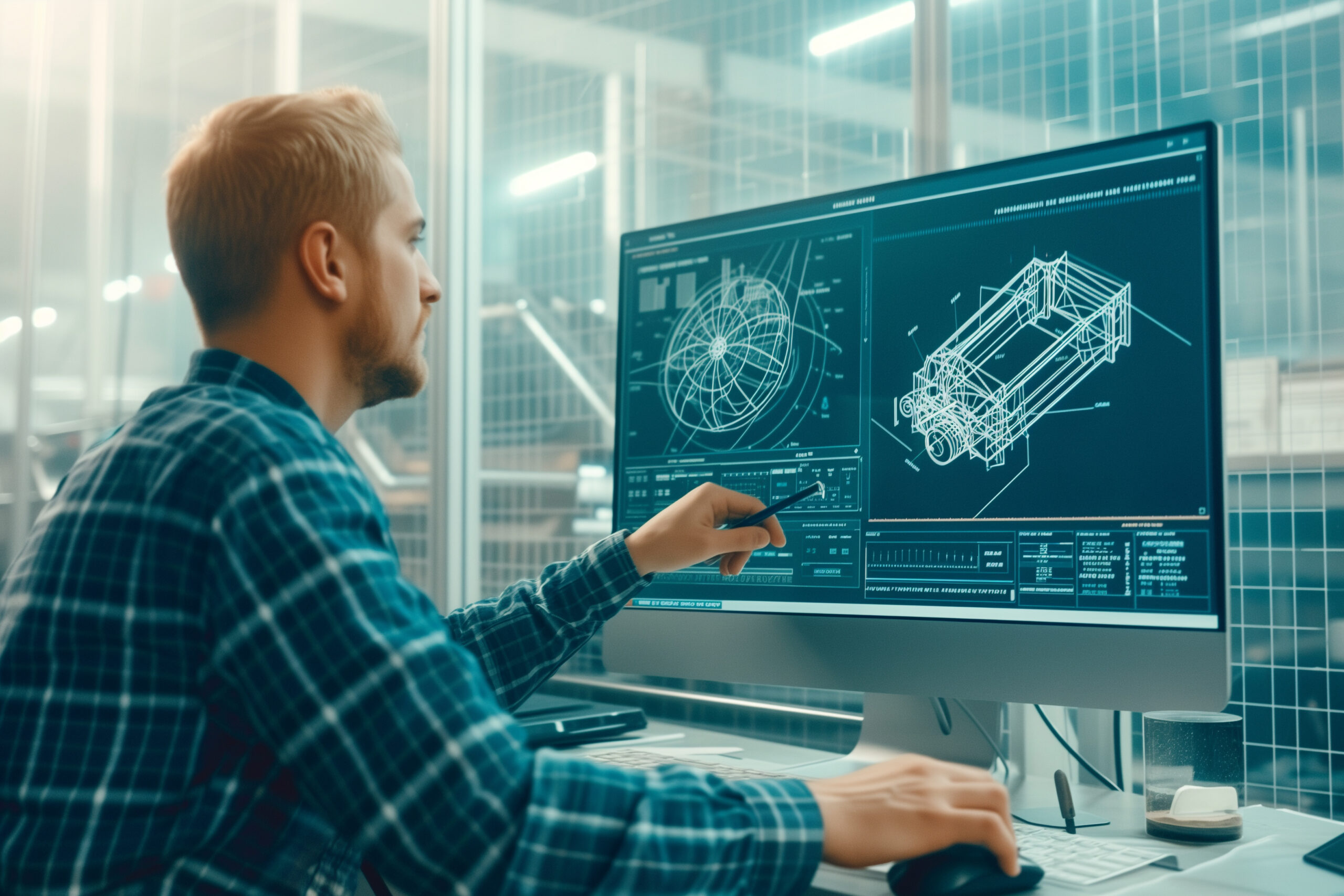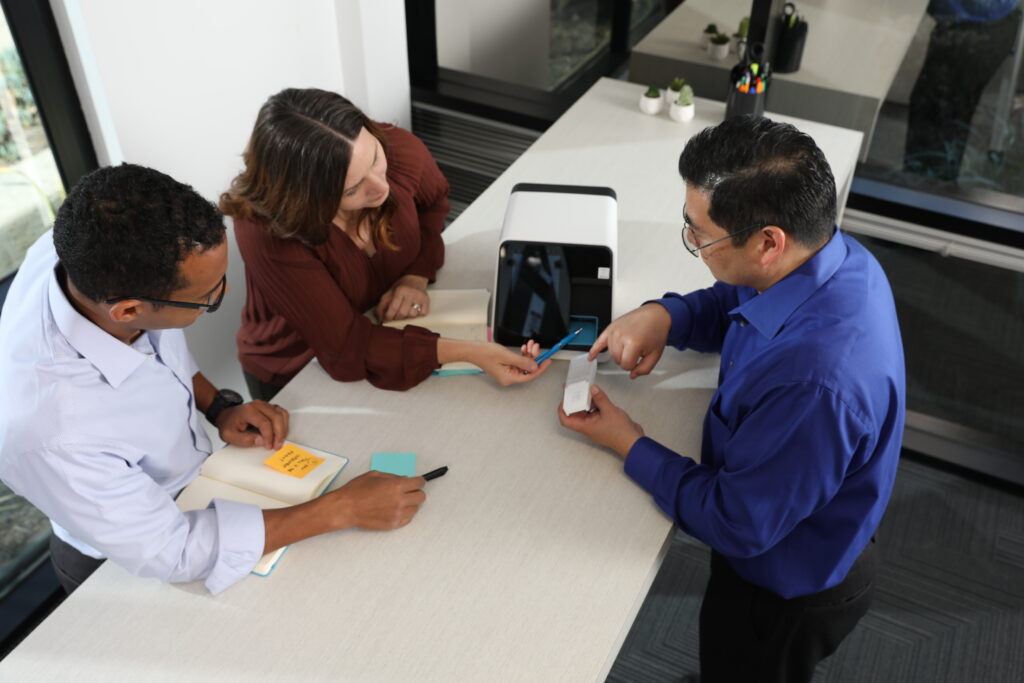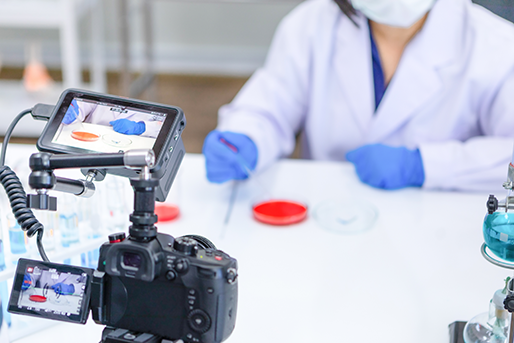A Consumable is: a single use, disposable device that is used to present or deliver sample materials into an instrument for processing in a workflow as a closed system.
The design of the Consumable can be used to support one or more of the following functions:
- Sample introduction
- Fluid movement
- Carriage of reagents – liquids or powders (dry, lyophilized, or frozen)
- Extraction – to enable “elements of interest” to be isolated from the other components
- Filtration – Separation of one or more “elements of interest” from any other element
- Purification – to enable purification of the “elements of interest”
- Element replication – to enable concentration of “elements of interest” by techniques such as amplification (PCR) to enhance detection and analysis capability
- Detection – via methods of detection which may include fluorescence, colourimetry, impedance, magnetic or resonance
- Cross-contamination control – to prevent cross-contamination within a consumable
- Sterility – In some instances the consumable is for processing biological materials that will be introduced back into the human body – these must be sterile
- Materials/Functional Storage
- Fluid Management
- Managing Inputs
- Scale-Up Planning
- Disposal
Dry Reagents
Reagents that need to be kept dry to achieve a suitable shelf life. Methods:- Lyospheres
- Encapsulated lyospheres
- Dried down suspended reagents
- Loose powdered reagents
Liquid Reagents / Substrates
Reagents that need to be stored as a liquid for either re-hydration of dried reagents, or for dilution of the sample for processing, or substrates such as whole blood, media, saline or similar. Methods:- Foil Blisters
- Polymer Blisters
- Covered Reservoirs
- Ampoules
- Bags
- Glass or polymer tubes
Liquid/Reagent Mixing
Controlling the mixing dynamics of the liquids and reagents with sample to ensure homogenous distribution.
Methods:
- Shuttle mixing – via differential pressure
- Vibration / Sonication
- Stirring with magnetic bars
- Static Mixing through channel shape eg: Split height herringbone
- Aspiration and Dispense via Pipette
Liquid Metering / Measurement
Controlling the volume of the stored or introduced liquids in the consumable for the correct reagent dilution, flushing, separation and mixing of the inputs and/or stored reagents.
Methods:
- Overflow Reservoir Volume
- Differential pressure – known pressure drop
- Surface energy modification and/or selection eg: digital fluidics
- Hydrophobic filters
- Air Displacement Pipettor and pipette
- Peristaltic Pump
- Flowmeter
Liquid Movement: Controlling the stored or introduced liquids in the consumable for the dilution, flushing, separation and mixing of the inputs and/or stored reagents, via microfluidic or macrofluidic channels and reservoirs formed through film on moulds or lamination, or through sterile bags and tubes. Liquid Movement Methods:
- Valves – pancake, pinch, check, pressure actuated
- Differential pressure
- Surface energy modification and/or selection
- Hydrophobic filters
- Robotic Pipettor
- Peristaltic or Positive Displacement Pumps
Channel Formation Methods:
- Thin film welded onto moulded substrates with channels – Thermal, Ultrasonic, Laser
- Layered / Laminated films formed with adhesive or welding
- Polymer tubing and connections
We take pride in crafting software solutions that meet the highest standards of quality and compliance. Our expertise lies in medical devices, where precision and reliability are paramount. From concept to deployment, our experience and IEC 62304 compliant software development process brings innovative and solutions to life. Quality + Regulatory
- Regulatory Compliance: Adhering to regulatory standards, such as those established by the FDA, to ensure safety, effectiveness, and market approval.
- Regulatory Documentation: Creating comprehensive, well-organized documentation packages to support regulatory submissions.
Risk Management
- Data Security and Privacy: Implementing robust measures to protect patient information and comply with HIPAA.
- Hazard Identification: Conducting thorough risk assessments to identify and mitigate potential hazards.
- Testing and Verification: Rigorous processes to verify requirements and ensure software reliability and performance.
Sample Inputs
Controlling the means of sample introduction to the consumable and measurement to suit the onboard reagents through separation, metering or mixing to ensure homogenous distribution. Sample Introduction Methods:- Direct Liquid – eg: Blood, Saliva, Urine, etc – into measurement chamber
- Pre-processed – eg: swab into diluent solution
- On Consumable Swab – eg: swab into input chamber, and then flushed with onboard liquid
- Sample filtered to remove contaminants or non-soluble components
- Sterile Bag (Blood, Saline, etc)
Every consumable will experience similar phases of development, however the costs of the phases will be based upon the complexity of the ultimate consumable design. What is essential is planning for the costs of development, and the associated costs of ramping up the volumes required for development from Prototype, to Production in volume. Associated with each of the phases of development is the maturity of the manufacturing process steps at that phase, and the resultant comparative cost of the consumable. For Example, as the design and assembly maturity improves, the production yield improves:
- Prototype – 70%
- Alpha – 80%
- Beta – 85%
- Pre-production – 90%
- Early production – 90-95%
- Stable production – 99%
However, as the production volume goes up, process automation becomes cost effective, and consumable unit cost reduces through volume purchasing of raw materials, and reduction of labor in the process.
Used Consumable Disposal
The consumable is assembled from polymers and metals that can be re-cycled – generally, most components used in a biological investigation use will become biological waste and incinerated. However the consumable will be designed to seal in all components introduced and used in the assay. Sealing Methods:- Hydrophobic Filters (HPF) – to control fluid flow/metering while preventing egress of all reagents and biological materials in the fluid
- Welded channels – tested through pressure leak-down during assembly
- Interference fit lids / caps for the sample input
- Gaskets used in all interfaces where differential pressure used – with HPF separation as required
- Tube welding and sealing



